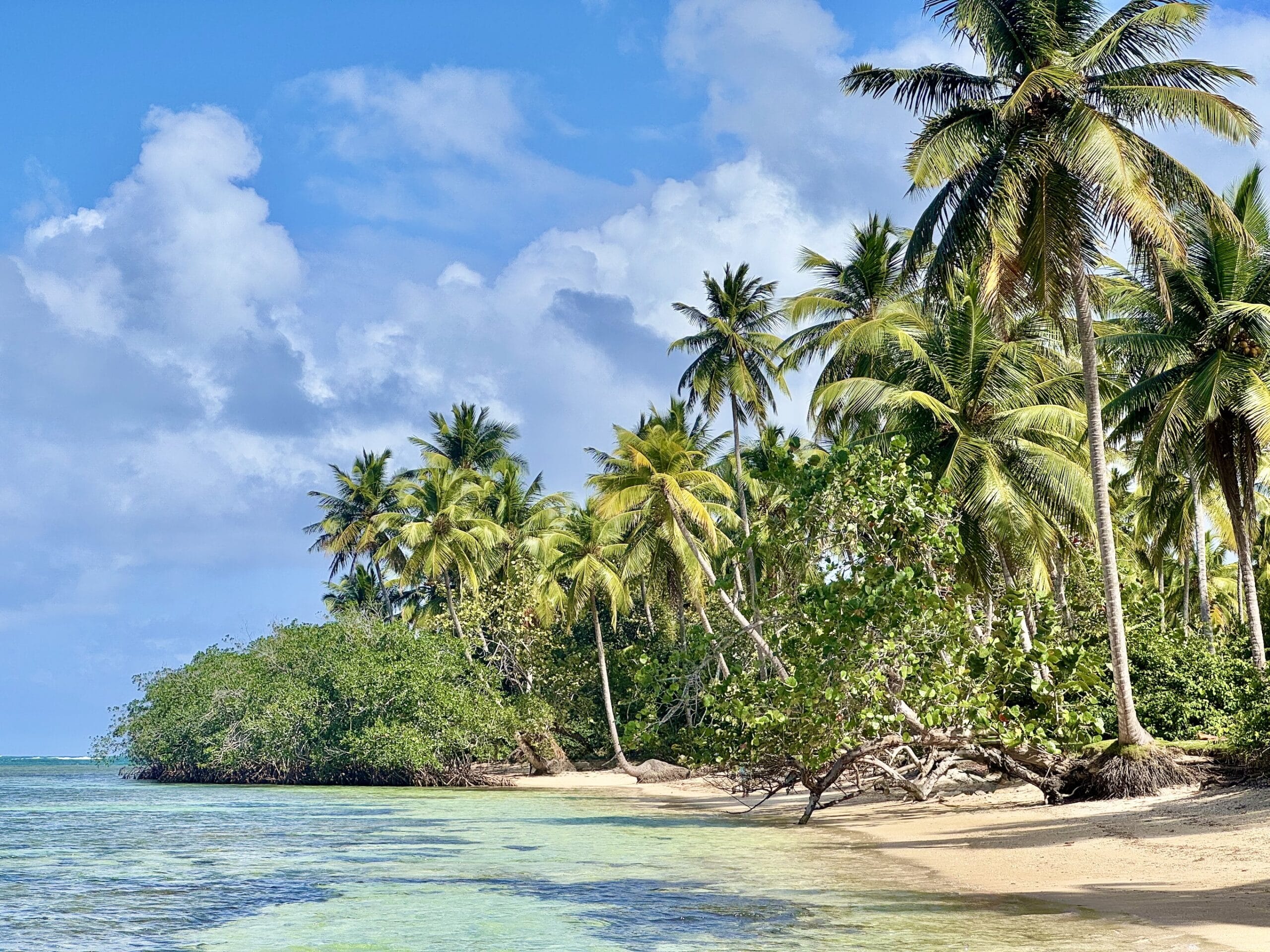Las Terrenas was our second major stop in the Dominican Republic, a charming town nestled on the northern side of the Samaná Peninsula. We arrived by bus from Punta Cana (which we covered in detail in another post). Originally, we planned to spend four nights here before moving on to Las Galeras, but we fell so in love with this little town that we quickly extended our Airbnb stay to seven nights.
Las Terrenas is a small city of about 25,000 residents, located roughly 225 km (140 miles) northeast of Santo Domingo. What’s truly surprising is that more than 10% of the population – according to local reports, about 3,000 people – are French. I initially thought this was a relatively modern phenomenon with French immigration happening in recent years, but the town’s name actually derives from the French word la terrienne. This is a very young settlement: founded in 1946, and French residents have been arriving since the 1980s, even establishing a French school in 1986.
Until recent years, this was a quiet small town and definitely not a modern tourist destination. Electricity wasn’t installed until 1994, and running water didn’t arrive until 1997, which tells you a lot about its development. However, in the past few years, tourists have discovered Las Terrenas, and it’s experiencing explosive growth – which the infrastructure development hasn’t always been able to keep pace with. This is most noticeable in the relatively frequent power outages (though these are common throughout the country) and the constant construction projects we encountered, primarily modern-looking residential complexes being built specifically for foreigners.
Power outages are common throughout the Dominican Republic, so pack a portable battery and consider accommodations with backup generators if you’re sensitive to power interruptions.
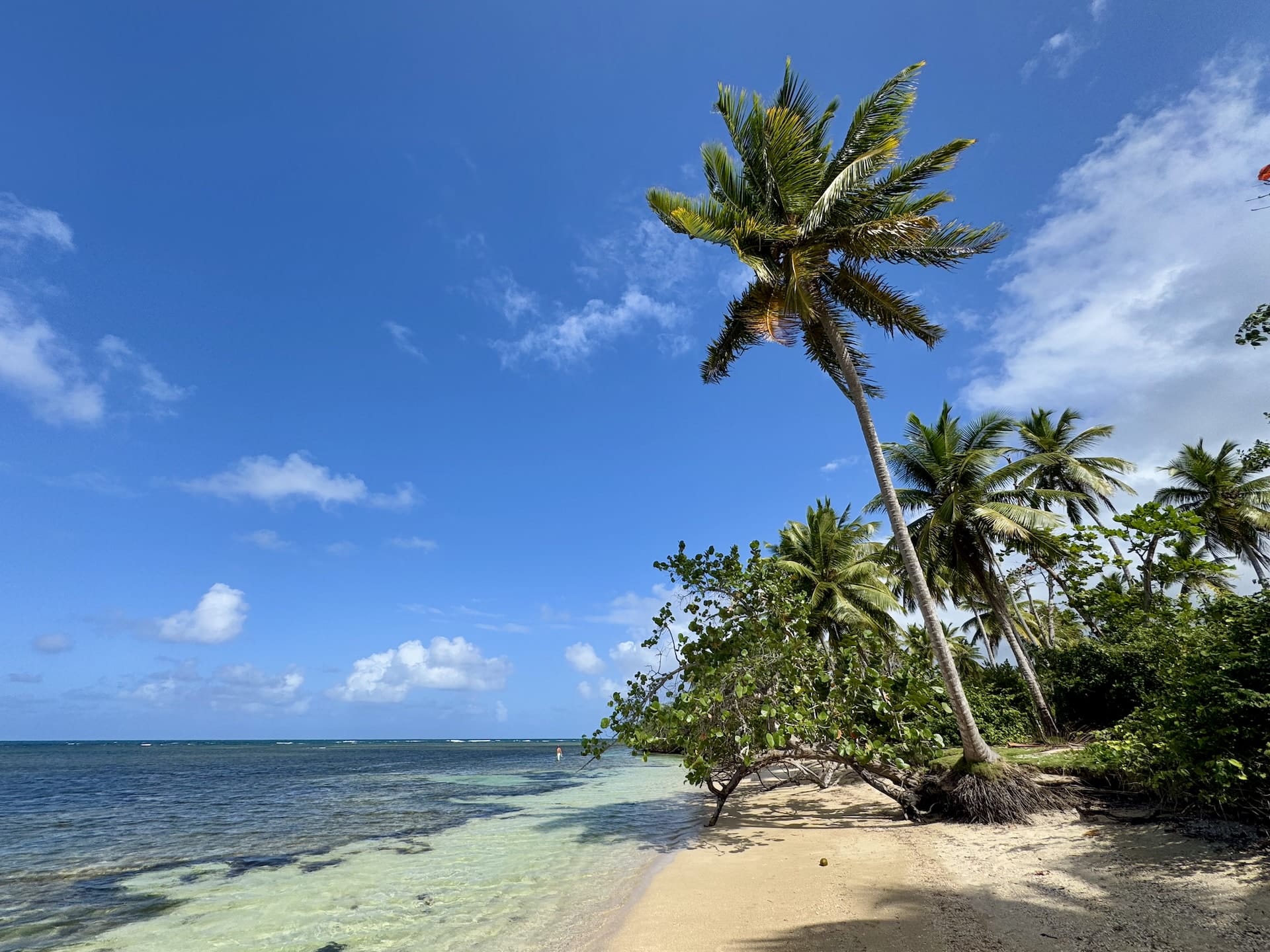
Despite this growth, the town is still relatively small and quite navigable. Picture a T-shape: the vertical line is the continuation of the road coming from Santo Domingo, while the horizontal line runs along the coastline. Life really happens at the intersection of these two arms, where you’ll find most restaurants, bars, and the main local travel agencies. Along the top line, you’ll find tourist-oriented hotels, residential complexes, apartments, and of course, the beaches and beach bars.
The local crowd and atmosphere are very different from places like Punta Cana – fortunately, which is exactly why we chose Las Terrenas as our base. We hardly encountered any Americans during our stay. When it comes to foreigners, the crowd is mainly French, Italian, German, and Canadian. The age demographic skews notably older. You can clearly see that many snowbirds have started looking beyond Florida for alternatives, and Las Terrenas attracts particularly active and adventurous older travelers. It’s amazing to see all these cool retirees cruising around on their ATVs to go shopping or hit the beach. Honestly, that’s exactly how I’d like to spend my retirement years.
Getting Around Las Terrenas: Transportation Options
We debated whether to rent a car in Las Terrenas and ultimately decided to go there first and make the decision locally – even though this carried the risk of no available vehicles. In the end, we didn’t need one, and given the traffic and narrow streets, it didn’t seem very practical anyway. For more distant locations, we used day trips, while around town and nearby areas, a scooter/small motorcycle or ATV serves you much better.
Since neither of us had ever driven an ATV, we first tried it out during a day trip: we rode to El Limón waterfall, then down to the coast and back to Las Terrenas. This was about a 40 km (25-mile) circuit (mostly on public roads), after which we felt confident enough to rent our own vehicle. I’d basically recommend two places: Nano Vega or Lucky Moto, though we ultimately chose a third option that I wouldn’t recommend (nothing seriously wrong, but the ATV was pretty beat up). Rentals run $50-70 USD per day, depending on duration and size. There’s no point getting a 500cc model, but it’s practical if the rear passenger gets a backrest and there’s a front box or similar storage for your belongings. They didn’t ask us for a driver’s license or anything similar…
Always inspect your ATV rental thoroughly before accepting it. Check brakes, lights, and take photos of any existing damage to avoid disputes when returning.
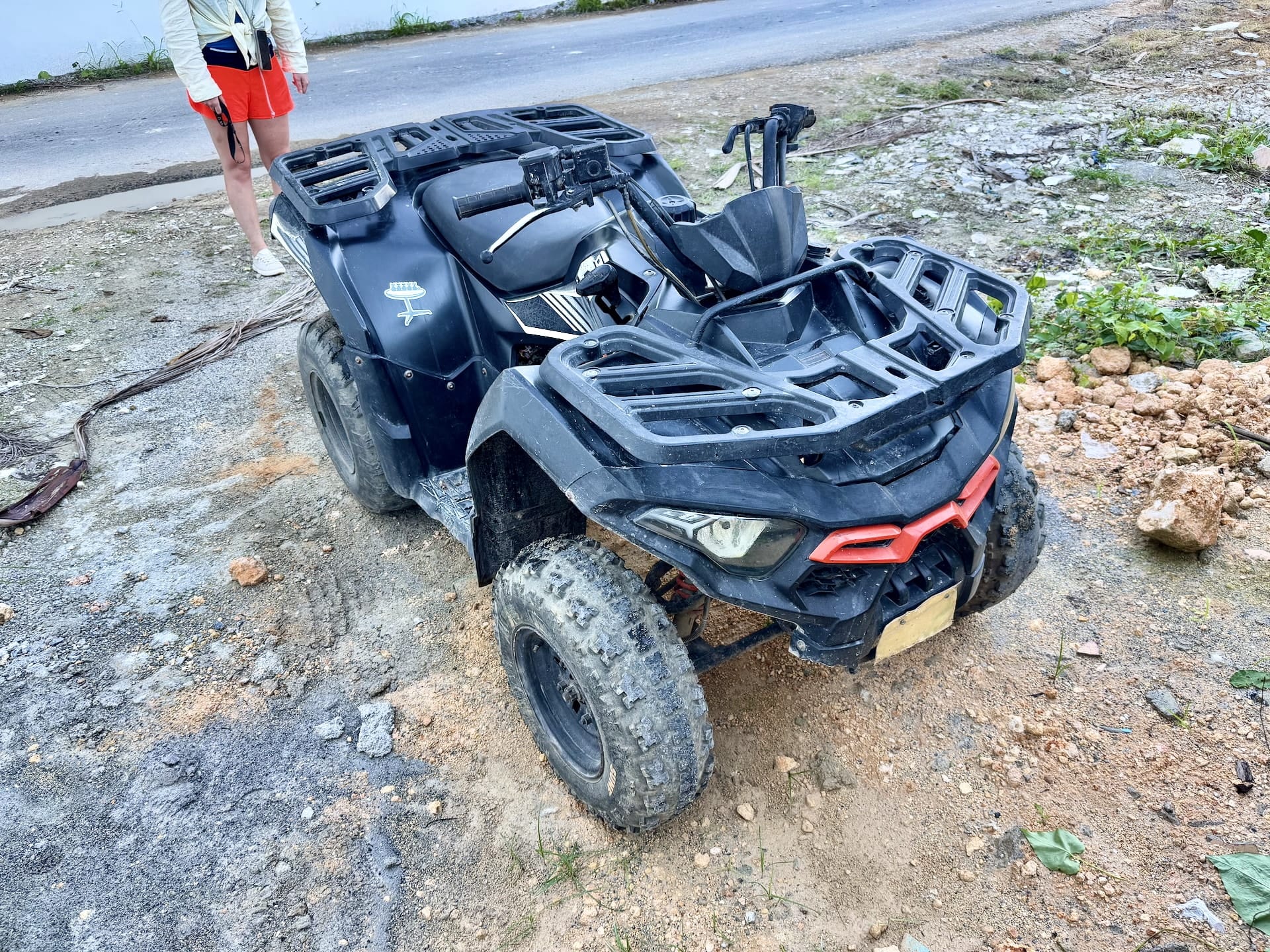
If you don’t have an ATV, the fastest and simplest transportation within town is the motoconcho. These motorcycle taxis are everywhere – even if you’re just strolling along the beach, they’ll ask every 30 seconds if you need a ride. The prices seemed a bit steep to me (300 DOP (~$5.1 USD) from the bus station to our accommodation, around 200 DOP (~$3.4 USD) from one side of the T to roughly the other, depending on negotiation), and it’s not super comfortable for two people, but the drivers readily take on passengers. Hat’s off to their riding skills, by the way.
For longer distances, taxis are an option. We encountered two taxi stands in town: one was practically at the end of our street, the other at the intersection of the T’s two arms. Taxis have fixed rates, and the prices are pretty steep: Samaná $70 USD, Santo Domingo $200 USD, and Punta Cana $400 USD one way. When departing, we took a taxi to catch our morning bus because of a torrential downpour – that cost $10 USD.
The most cost-effective and locally-used intercity transportation consists of guaguas – mini-buses or pickup trucks with benches in the bed (similar concept to Colombian colectivos or old Eastern Bloc marshrutkas). I’ll admit we couldn’t definitively figure out where these depart from, though we once saw one at the T intersection where some very cheerful retirees were getting off. According to Google Maps, there’s a stop here, but if you want to ride a guagua, it’s worth asking someone about the situation. Legend has it that fares are about 200-300 DOP ($3.4-5.1 USD) to Samaná and 100-200 DOP ($1.7-3.4 USD) to El Limón. We originally planned to take one to Las Galeras, but as mentioned, we ended up staying in Las Terrenas the entire time.
Of course, there are “traditional” buses too – as I mentioned, that’s how we arrived. The bus station is at the town’s “entrance,” where you can find the schedule posted on the small shop’s wall. Buses go to Santo Domingo, Puerto Plata, Santiago de los Caballeros, and Nagua.
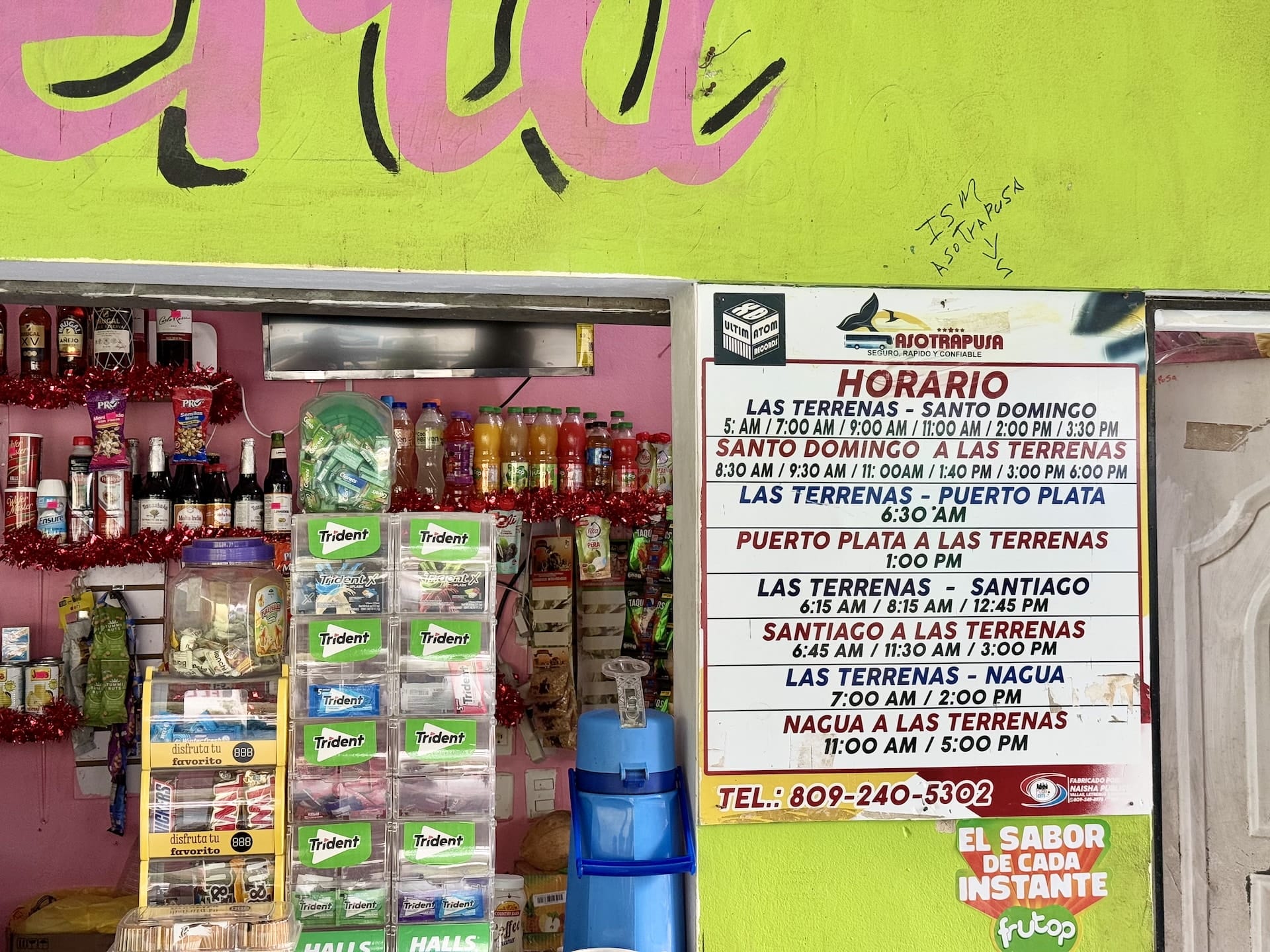
Finally, there’s walking. Our accommodation was about 1 km (0.6 miles) from the center, and we often simply walked into town when we had business there (like catching a day trip), and we usually walked to evening dinners too. Las Terrenas absolutely isn’t a large city and is totally walkable, though the T-shape does spread things out quite a bit between certain points, so longer distances are really worth covering with some other transportation – mainly motoconcho or rented motorcycle/ATV.
Where to Stay in Las Terrenas: Best Neighborhoods and Accommodations
Las Terrenas is packed with accommodations, but since it’s becoming increasingly popular, the better apartments and hotels can fill up, so it’s worth booking somewhat in advance – we did so just under two weeks before arrival.
We basically looked at both sides of the T’s top, near the beachfront, and I think we made a good choice. It’s worth not staying directly along the coastal road or in the center, as I can imagine it gets noisier, but at 500 feet (150 m) from the beach, where we stayed, the nights were absolutely peaceful (by Latin American standards!). The eastern side seems a bit fancier, but I think Playa las Ballenas on the western side is a better beach.
Book accommodations away from the main coastal road to avoid traffic noise, but stay within walking distance of the beach and restaurants for convenience.
We chose Casa Mar 4 on Airbnb, which was an upper-floor apartment in a multi-unit building, beautifully furnished and perfect for the two of us with separate bedroom and living room-kitchen. The power went out a few times during the day (the building doesn’t have a generator), and once the water was off for a few hours, but these are actually normal occurrences in the Dominican Republic, and it was perfect value for money.
We also looked at the following accommodations, though we don’t have personal experience with them:
- Paradise apartment in Las Terrenas / Punta Popy: on the opposite side from where we stayed, probably more hustle and bustle
- Hotel Coco Plaza: this hotel was at the end of our street, looked good, though it’s right on the coastal road corner
- Jandalavillage: far from town, but could be a good choice if you want to escape from the world
- Residence Las Dos Palmas: we also looked at this area, several options available here
- Lovely 1 bedroom apt in quiet residence: also on this side of the T; incidentally, there was flooding in this area shortly before our arrival, worth keeping in mind
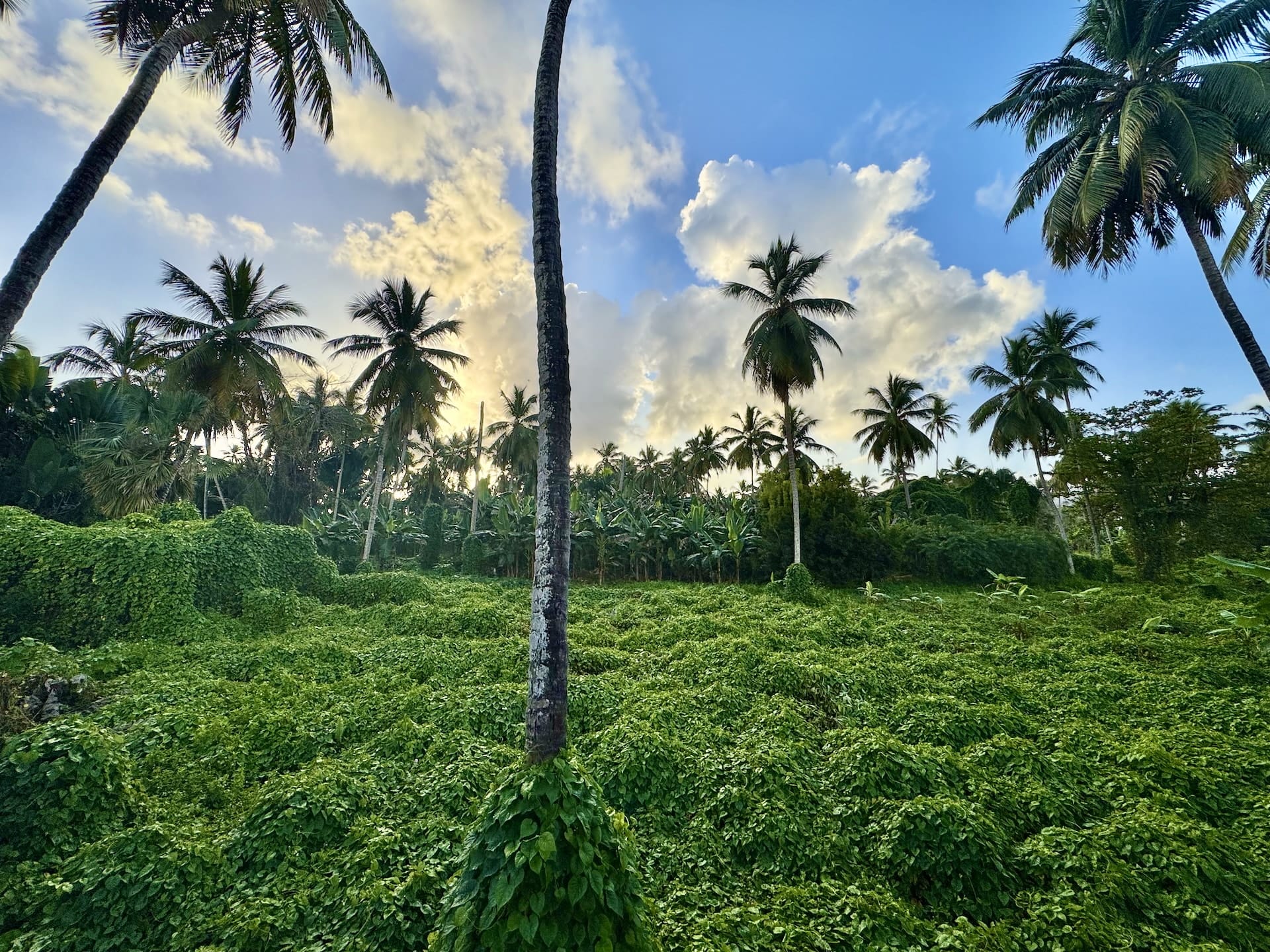
What might also be surprising is that most apartments and Airbnbs state that electricity must be paid separately based on the meter reading – it’s not included in the price. This was mentioned in our description too, but ultimately the host didn’t charge us anything – maybe because we didn’t run the AC mindlessly day and night. (Just almost all night long.)
Shopping and Services: Where to Buy Essentials
Although we spent eight days total in town, we didn’t cook much, so we mainly needed to buy small items (like beer and rum). At the end of our street was a Best Price supermarket, about which many things can be said, but certainly not that things were reasonably priced. It was fine for popping in for a few things (beer) on the way home, but we didn’t do our major shopping there.
The town’s probably largest and most popular supermarket is Lindo, which local expats also recommended to us. It’s quite far from the beach, so it might be worth visiting by motorcycle/ATV. This isn’t particularly cheap either, but there’s a bigger selection than at an average colmado. And what might be very important: there’s a Scotiabank ATM here, from which we could withdraw money with our Revolut cards without any fees, which is rare as hen’s teeth in the Dominican Republic.
Bring a Revolut card or similar fee-free international card, and locate Scotiabank ATMs for the best exchange rates and minimal fees when withdrawing cash.
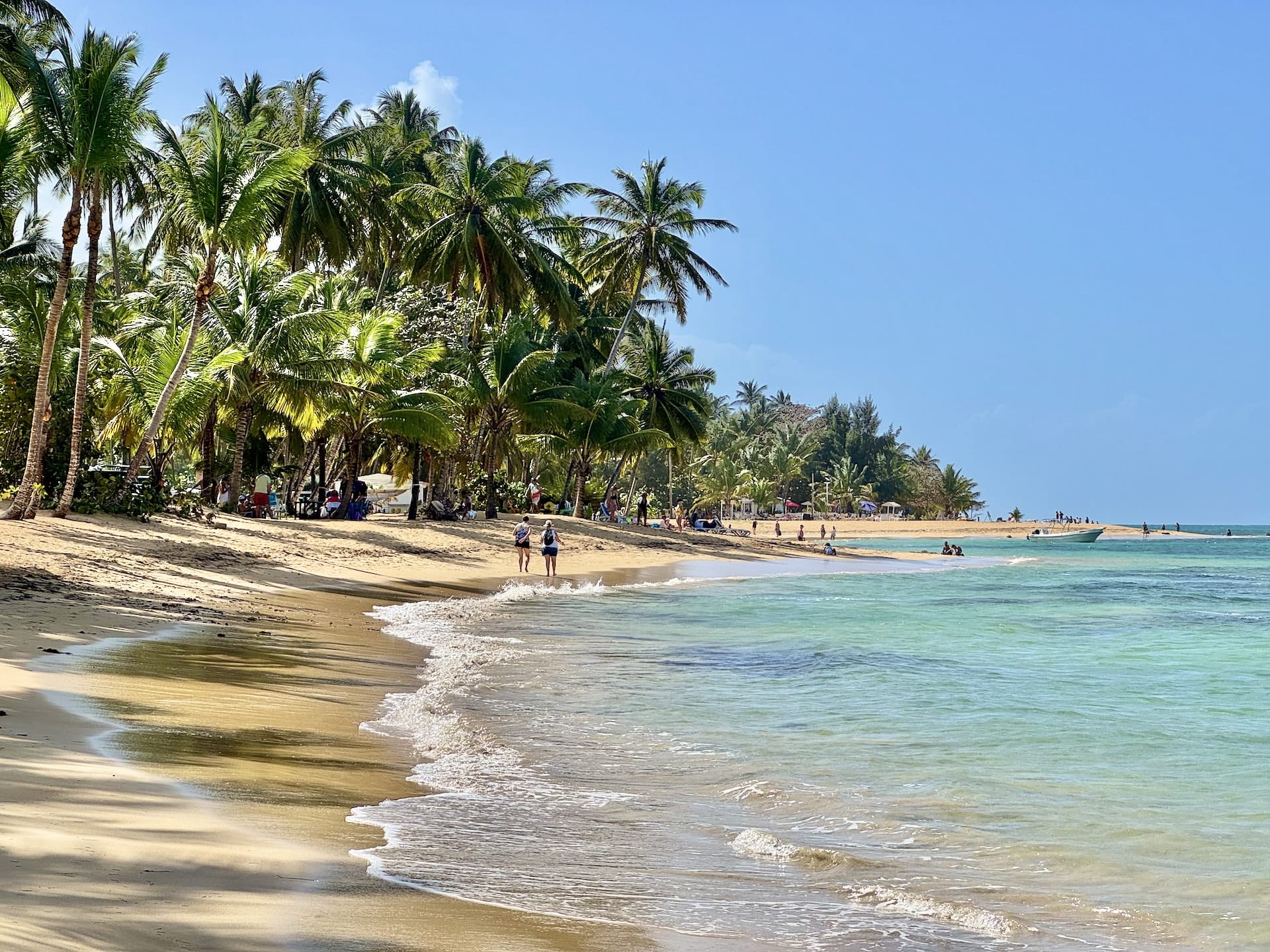
Speaking of colmados: these are local small shops (like tiendas in Colombia), and the town is full of them – you’ll encounter about a dozen on practically every street. If you want to support locals, it’s worth shopping at these. Basic items (water, soft drinks, beer) are naturally available in them, but forget about card payments. Fruit and vegetable vendors are also common, especially along the T’s vertical arm.
We went to a laundromat once, Terrenas Laundry in the center. It has pretty bad reviews, but we had no problems – the wash-dry was ready in about two hours, just enough time for us to pop over to Lindo and have a beer at a nearby comedor. If I remember correctly, it was around 500-600 DOP (~$8.5-10.2 USD) per load.
Where to Eat and Drink in Las Terrenas: Restaurant Guide
As I mentioned, we didn’t cook much at home, so we visited quite a few places in Las Terrenas – though prices aren’t low (one main dish easily 500-800 DOP / $8.5-13.6 USD), which was surprising. Maybe that’s why we didn’t actually encounter huge crowds and masses of visitors anywhere. The places are very international, with tons of European restaurants, and there seem to be significantly more of them than Dominican ones.
Empanadas y más
We probably stumbled into this place on our street on our first evening, and it perfectly set the tone for our Las Terrenas stay. The place is run by a Chilean (I think ex-hippie) with his family. He and his wife prepare the food, while their little daughter sometimes serves (who speaks excellent English!). We had homemade empanadas and ceviche, and everything was absolutely excellent, especially the fresh mahi-mahi ceviche, which I don’t usually even like. The owner is a real character, and supposedly you should make reservations because there’s usually no space – seems we were just lucky. We definitely wanted to come back, but unfortunately it was closed for the rest of our stay.

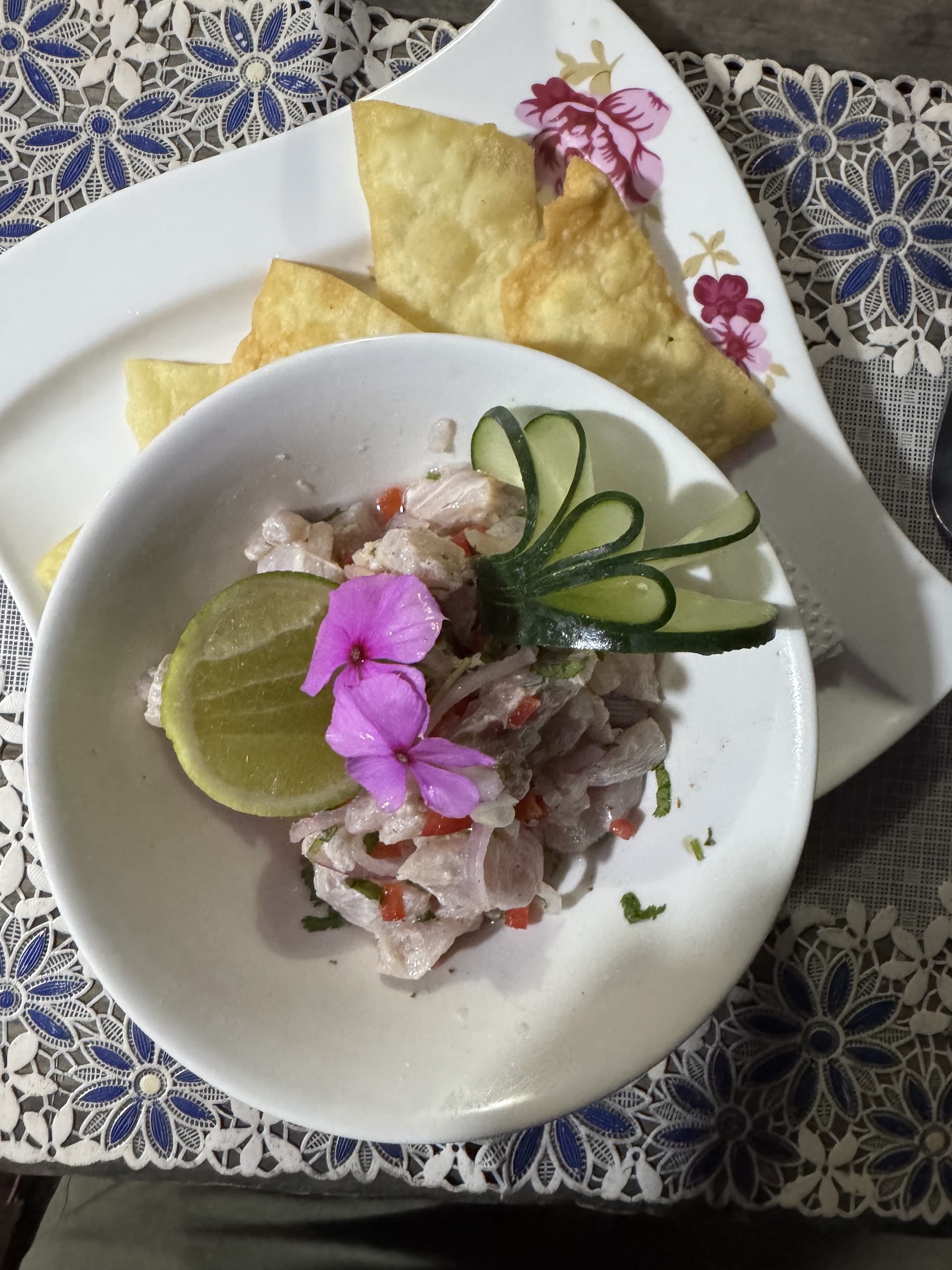
Plaza Delfín
Right next to the previous restaurant is this place, whose entrance is a bit hard to find – we even gave directions to people when we were sitting up on the terrace. You have to go up the stairs, then walk along the corridor on the street side to finally reach the restaurant.
It has a quite unique atmosphere, greatly enhanced by the owner Isaac and his love of music. The place serves Italian-style cuisine with exciting dishes like cocoa tagliatelle with blue cheese sauce, and they have good wines too. Isaac is incredibly kind, speaks perfect English, everyone greets him from afar and loves him – but when we tried to investigate who he actually is (because he’s supposedly famous), we ran into some interesting stories.
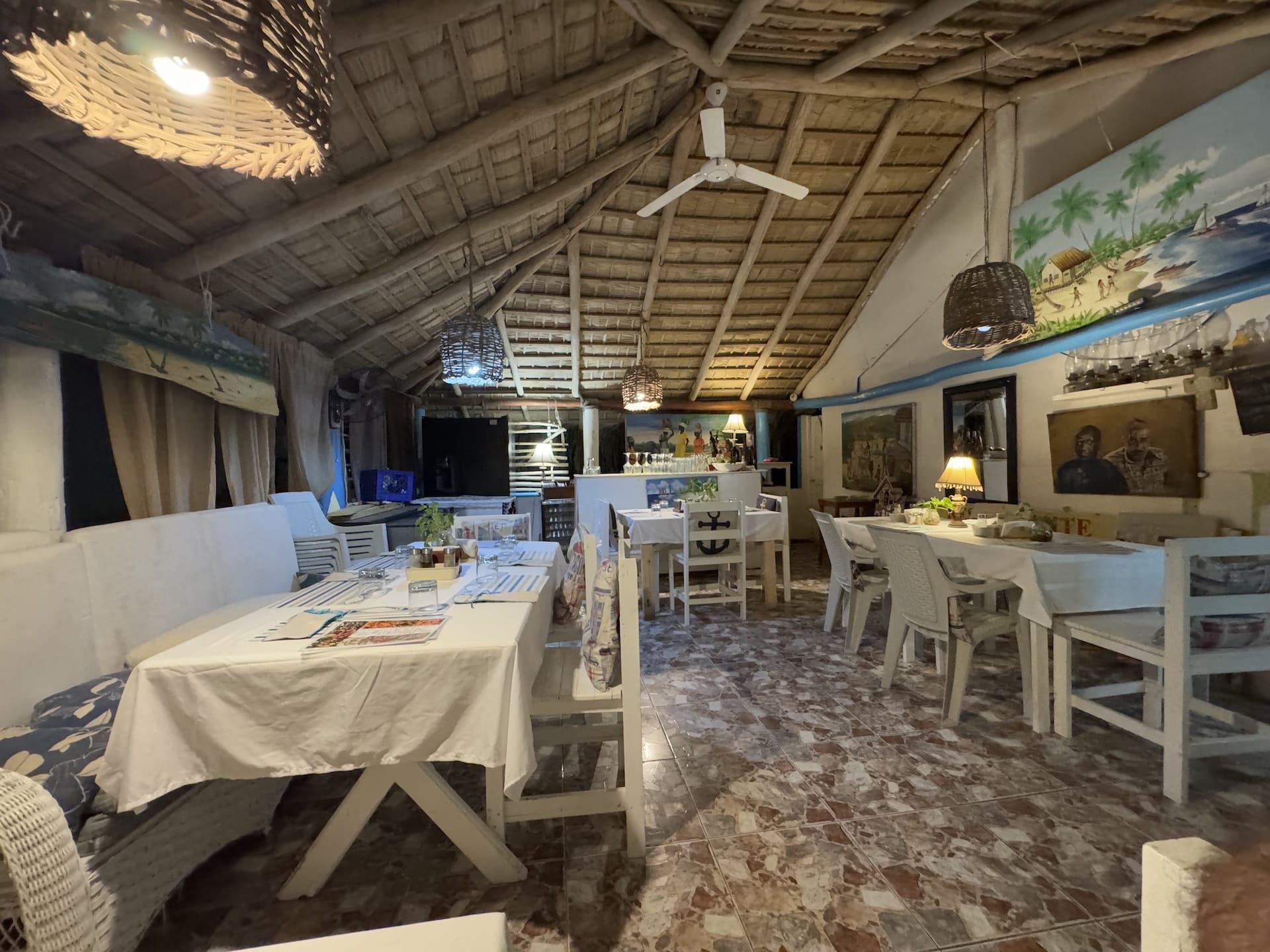
El Yarabi
A French sister duo, Alisson and Lara, run this place, where you can get very good hearty breakfasts or light lunches. The regular clientele is basically French, the food is French-Italian with some Dominican influence. Everything is fresh and super, shame it closes very early. A breakfast runs around 500 DOP (~$8.5 USD).
Heidi’s
If there’s one thing I didn’t expect, it was finding a German restaurant in Las Terrenas, but Heidi’s is exactly that. I had a currywurst, which was pretty meh, but Andrea’s cordon bleu was quite good. When we were there, it was one of the cheapest places we found. Since then, prices have risen a bit – a main dish runs around 450-500 DOP (~$7.7-8.5 USD).
Mosquito Rooftop
One evening we decided to pamper ourselves a bit and go for cocktails and dinner at a rooftop bar. There are several Mosquitos, and we chose the one closest to our accommodation, in the Pueblo de los Pescadores neighborhood. Maybe we arrived early (sometime between 7 and 8 PM), but besides us, no one was there – I don’t know if this changes later. The cocktails and food weren’t bad, but value-wise, this isn’t the best place. At one time there probably really was a good sea view, but they recently put up some buildings across the street, which significantly ruins the overall picture.
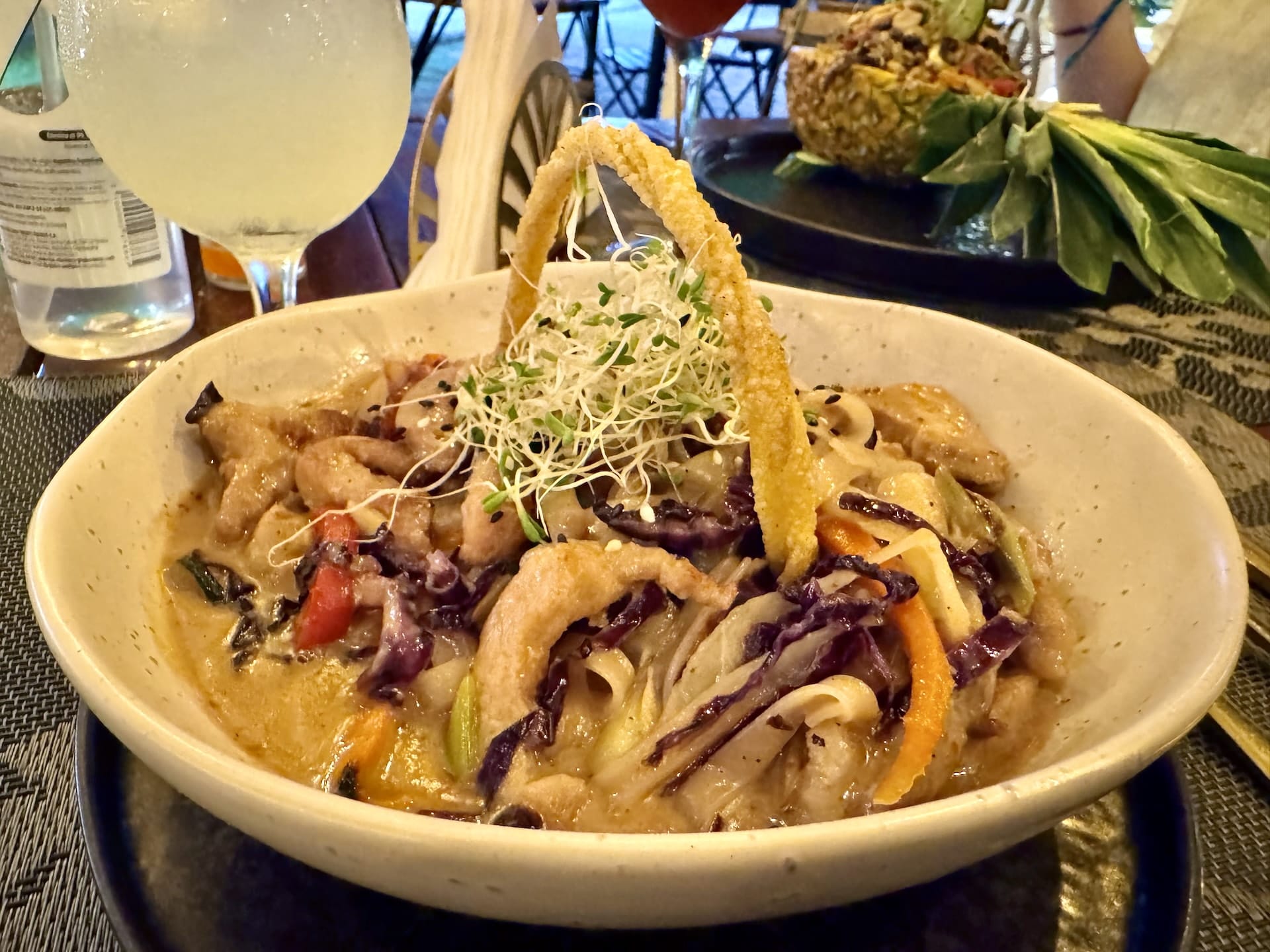
Additional Places
We also tried the following places:
- Pulcinella il gusto di napoli: Also on our street, a perfectly good little Italian place with good Neapolitan pizzas.
- Pizzeria Da Lu: The other Italian pizzeria closer to the center that we visited. Great atmosphere, super Neapolitan pizza, lots of Italians.
- Dominican Thai Fusion Food: As the name suggests, they serve interesting fusion cuisine. I had a coconut pad thai that was very tasty. The first restaurant I’ve ever seen where insect repellent comes with the salt and pepper on the table (and it’s needed too).
- Dulce de Oro: Very good French-style bakery and dessert shop with super pastries and cakes. The coffee isn’t bad either.
- Suvid(?): I’m not sure about the name, and I couldn’t find it on Google Maps, but it’s behind El Yarabi in the shopping center’s inner courtyard. You can get real Canadian poutine, which is perfect comfort food after a tiring adventure. They also have special tacos.
- La Paneria Italian Bakery: This was probably the only place we visited that wasn’t good. The coffee was just okay, the pastries were rather meh, and the service was downright unfriendly.
What’s also worth keeping in mind is that most restaurants – and this applies to the entire Dominican Republic – don’t include tax and service charges in their posted prices, but they add them to the final bill total, which usually means an additional 20-30% cost. We rarely found places where this wasn’t the case.
Always budget an extra 20-30% on top of menu prices for taxes and service charges, which are standard practice throughout the Dominican Republic.
Beyond the above, there are countless more restaurants and comedores in town. The latter are smaller local eateries, and for some reason we didn’t visit any while we were there – I really regret this now. These typically serve distinctly Dominican food at quite reasonable prices.
Best Beaches Near Las Terrenas: Complete Beach Guide
Las Terrenas is basically one big beach. I’m not a huge beach bum, but here we did explore quite a few beaches. Most are absolutely gorgeous and exactly what I love: beautiful, long sandy shores with tons of palm trees. The water was clean in most places, though surprisingly cool in February (meaning about 25°C / 77°F). We encountered much less seaweed here than in Punta Cana.

We visited the following beaches:
- Playa las Ballenas: This is at the western end of town, very close to our accommodation. There weren’t crowds, there are several good beach bars, and the vibe is great since locals come here on weekends to grill, chill, and listen to music. This was actually my second favorite. The map is a bit misleading – it starts much further east.
- Playa Las Terrenas: On the eastern side of the T-shape. We actually just passed through here, it seemed quite busy, less peaceful than Ballenas. There are plenty of bars and restaurants here too.
- Playa Punta Popy: A bit east of the previous one, on a small peninsula. For some reason it’s really hyped up, but honestly doesn’t differ much from the others. Which of course means it’s very beautiful. This is also among the more crowded ones.
- Playa Poncho: You need some kind of vehicle to get here, it’s about 10 minutes from the center. Accordingly, it’s somewhat more peaceful, and there’s a beach bar. When we were there, it was raining, so we mainly just drank.
- Playa El Anclón: Finally, our absolute favorite, which we discovered on one of our day trips and then returned to multiple times. You have to turn off the main road, and it’s worth arriving by ATV because you can’t exactly get there on a paved road. We initially hung out near the fancy villa area, where the water is crystal clear and there are smaller clear sandy “pools” on the seagrass-covered ocean floor. If we sat for a bit, colorful Caribbean fish would appear after a few minutes swimming around us, and we could closely observe tiny hermit crabs too. Whenever we were here, there were never more than 1-2 other people besides us, and usually we had the beach section to ourselves.
Rent an ATV to access the more remote beaches like Playa El Anclón – these hidden gems offer pristine conditions and fewer crowds than the main town beaches.
Beyond these, there are of course tons of named and unnamed beaches in the area. The entire coastline around Las Terrenas is gorgeous with sand and countless palm trees. I think it’s worth going a bit outside town – there are so many places that you can easily stumble upon beach sections where there’s a good chance no one else will be there besides you. However, it’s worth arriving by ATV, as the trails aren’t really designed for cars.
Day Trips from Las Terrenas: Adventure Tours and Excursions
Countless day trips depart from town. You can purchase some of these on the usual platforms (like GetYourGuide), but we actually just walked into a sympathetic office and signed up in person for all of them. We tried the following agencies: Flora Tours, Arena Tours, Nano Vega. We were satisfied with all three and didn’t run into problems anywhere, except for one thing we didn’t really expect.
Important information: most agencies are run by French people (of the above, Nano Vega was local), and the excursions are tailored for French tourists. Not that a French person fundamentally wants something different than any other nationality, but in practice this means that in most cases, the guide accompanying you will primarily speak French, and since most participants are French, that’s mainly how they’ll communicate. I’m not saying we had huge problems with this – especially since Andrea speaks a bit of French – but it would have been more comfortable for us if English was the base language.
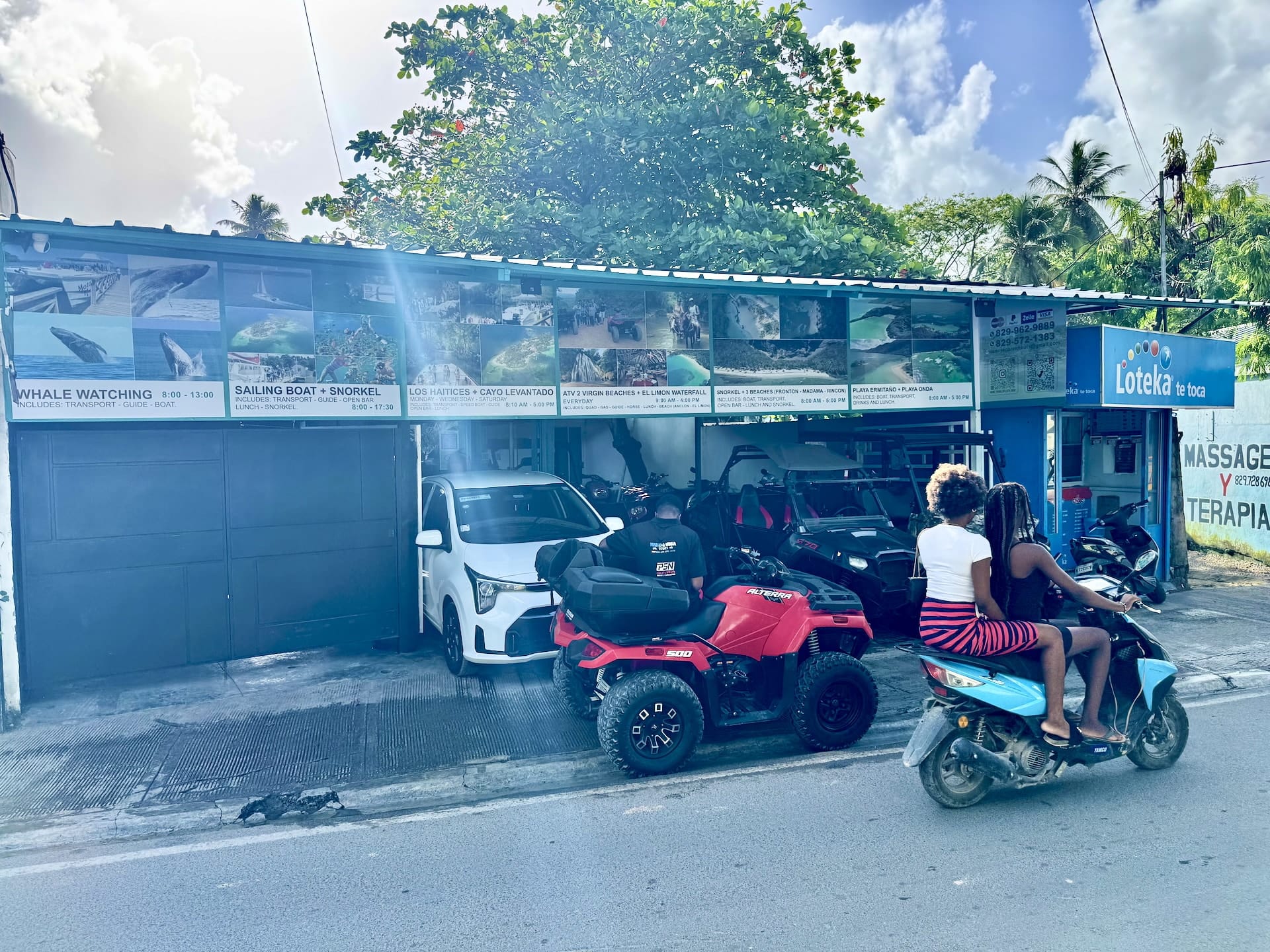
We did the following day trips from here, and we’ll cover each in separate detailed posts:
- El Limón waterfall and two virgin beaches ATV tour (Nano Vega)
- Whale watching with Kim Beddall (Arena Tours)
- Three beaches tour (Flora Tours)
Beyond these, we also looked at the following but unfortunately didn’t have time for them:
Summary: Why Las Terrenas Should Be Your Dominican Republic Base
Las Terrenas offers the perfect blend of authentic Caribbean charm and modern conveniences, making it an ideal base for exploring the Samaná Peninsula. Unlike the resort-heavy areas like Punta Cana, this former fishing village maintains its character while providing excellent restaurants, beautiful beaches, and adventure opportunities.
The town’s unique French influence creates a distinctly European atmosphere in the Caribbean, with excellent cuisine and a more mature, sophisticated crowd. The stunning beaches, from the lively Playa las Ballenas to the secluded Playa El Anclón, offer something for every beach lover. Meanwhile, the abundance of day trip options – from ATV adventures to whale watching – ensures you’ll never run out of things to do.
While Las Terrenas is rapidly developing and prices reflect its growing popularity, it still retains the peaceful, laid-back vibe that makes it special. For travelers seeking authentic Caribbean experiences with European flair, excellent food, and easy access to both relaxation and adventure, Las Terrenas is hard to beat.
